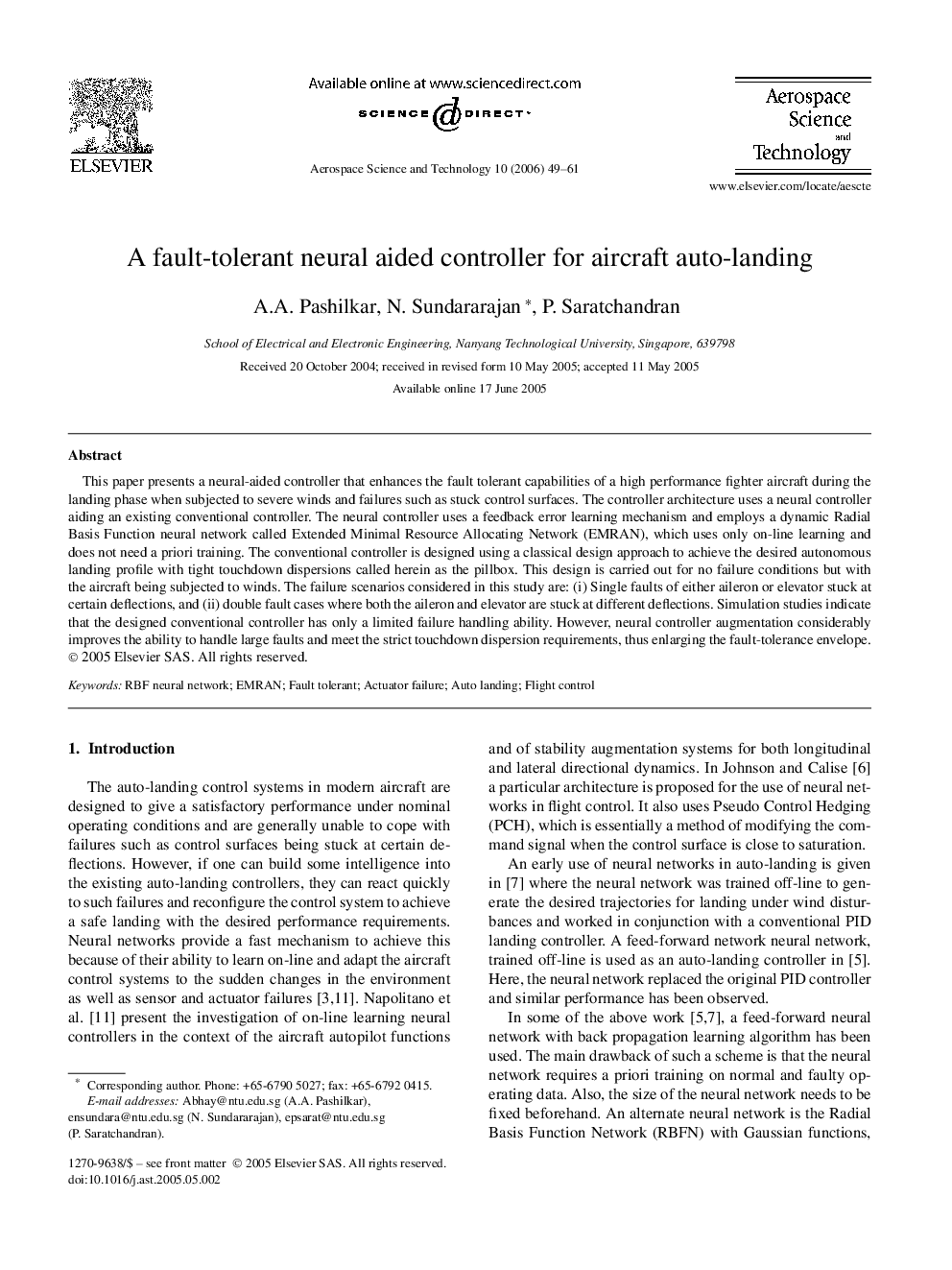| Article ID | Journal | Published Year | Pages | File Type |
|---|---|---|---|---|
| 1719052 | Aerospace Science and Technology | 2006 | 13 Pages |
This paper presents a neural-aided controller that enhances the fault tolerant capabilities of a high performance fighter aircraft during the landing phase when subjected to severe winds and failures such as stuck control surfaces. The controller architecture uses a neural controller aiding an existing conventional controller. The neural controller uses a feedback error learning mechanism and employs a dynamic Radial Basis Function neural network called Extended Minimal Resource Allocating Network (EMRAN), which uses only on-line learning and does not need a priori training. The conventional controller is designed using a classical design approach to achieve the desired autonomous landing profile with tight touchdown dispersions called herein as the pillbox. This design is carried out for no failure conditions but with the aircraft being subjected to winds. The failure scenarios considered in this study are: (i) Single faults of either aileron or elevator stuck at certain deflections, and (ii) double fault cases where both the aileron and elevator are stuck at different deflections. Simulation studies indicate that the designed conventional controller has only a limited failure handling ability. However, neural controller augmentation considerably improves the ability to handle large faults and meet the strict touchdown dispersion requirements, thus enlarging the fault-tolerance envelope.
